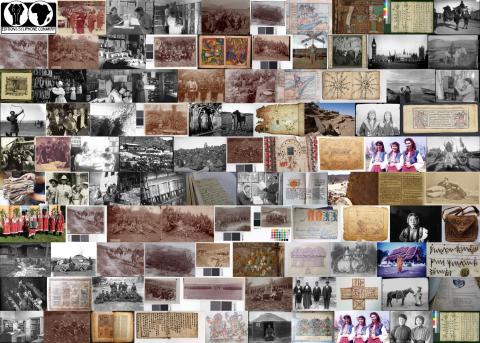
Aims and objectives
The Presbyterian Church of East Africa (PCEA) is one of Kenya’s largest and oldest churches. Its origins lie in the late-nineteenth century, with the Church of Scotland Mission to Kenya (CSM) and the Gospel Missionary Society (GMS). The PCEA archive is held in the bell tower of St. Andrews Church, Nairobi. This collection contains original CSM, GMS, and PCEA material, which ranges from c1900-present day. It is a small but valuable collection of historical material that is, in its present condition, endangered.
The archive promises to be useful to historians working in a broad range of areas in the history of East Africa. The collection includes church laws and ordinances, church council minutes, and parish registers, but it is not limited to ‘church’ matters alone. The colonial missions and the PCEA were key players in the social and political affairs of colonial and post-colonial Kenya and made decisive contributions to important debates over land, labour, health, and education. In particular, the CSM led a politically spectacular campaign against the Gikuyu custom of female clitoridectomy in the 1920s, and later played a significant role in ‘Mau Mau’ (in the 1950s).
The earliest material dates back to the turn of the twentieth century (the oldest document in the archive appears to be from 1903 - there is, quite possibly, material from the late-nineteenth century). This documents the highland interior of ‘Kenya’ at the point of colonial contact. The missionaries in question were among the first non-Africans to explore, settle, and work in this part of East Africa and among the keenest ethnographers of its inhabitants. There is material that provides descriptions of the pre-colonial mode of life, customs, religious beliefs, and language of the Gikuyu (the largest ethnic group in Central Kenya). This includes the work of missionary linguist Arthur Barlow, author of the first comprehensive study of Gikuyu grammar.
There appears to be a significant volume of pre-1914 missionary correspondence. This kind of material, which may provide valuable insights into the inner workings of a ‘pioneer’ mission, is scarce in the CSM’s primary archival repository in Edinburgh.
There is material written by Kenyan people during the early colonial period: mission-school exercise books, exam papers, and correspondence in English, Gikuyu, and Kiswahili. This material is extremely rare. The authors will have been among the first literate indigenous people. This material, together with missionary writings, gives a sense of the experiences of Kenya’s first Christians and their encounters with colonial modernities. Education was a major component of the CSM’s evangelical enterprise. The mission played a leading role in the establishment of the prestigious Alliance High School in 1927 and many of Kenya’s earliest and most influential ‘nationalist’ leaders (for example, Jomo Kenyatta and Dedan Kimathi) attended CSM schools. In the bell tower there are school reports, missionary reflections on education, and class registers which together document the early history of education in colonial Kenya.
In the 1960s and 70s the PCEA archive was used for landmark works in Kenyan history such as Jeremy Murray Brown’s biography of the country’s first President, Jomo Kenyatta, and Carl Rosberg and John Nottingham’s study of Mau Mau. In the late 1990s, Derek Peterson used the collection in his innovative social history of literacy in Central Kenya. But for long periods of time in recent decades, access to researchers has been restricted and the archive has remained largely under-used. Many of the present generation of PhD historians conducting research in Nairobi and Kenya are unaware of the PCEA archive.
The PCEA archive was accessed by the project team in October 2014 for PhD research into the social history of the CSM. The bell tower room had no discernible physical organisation: boxes were all over the place - some stacked on top of each other, some tightly packed together, some on the ground with their contents strewn on the floor. The room was dark, hot, dusty, and damp, harbouring insects and rodents. These conditions have already destroyed some material. In its current state, the archive is of little use to anyone.
The archive is important to the PCEA, with many within the church having a strong sense of their church’s history and pride in their ownership of this important archive but lacking the funds or expertise to undertake any preservation or conservation work.
The overall aim of this pilot project is to assist with the preservation of the PCEA archive in order to maximise its potential value and utility for both the PCEA and an international community of researchers. To achieve this, the pilot project will: 1) establish the full extent and content of the PCEA archive by conducting a survey of the bell tower material; 2) produce digital copies and detailed lists of a prioritised sample of the oldest, most interesting, and/or most vulnerable material; 3) clean and organise the material held in the bell tower; 4) garner interest in the archive among parishioners, PCEA church members, and researchers in Kenya with a view to developing a more long-term project to preserve the archive. Possible future options will be explored for the relocation of the original material.
Outcomes
The pilot project team cleaned, organised and catalogued the material held at the bell tower. Due to the PCEA not giving permissions to have content made available online, EAP has not received any digitised material that was planned as part of the project.


